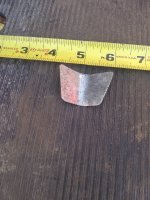My suggest is to pull the bottom radiator hose off the engine side. Drain all the antifreeze that will come out. Reinstall the hose and fill with water run for a few minutes and drain again through the bottom radiator hose. Reinstall the hose and fill the the appropriate water-antifreeze mixture.
Stay away from if possible removing the plug on the block. Most diesel have wet sleeves in he engines. This is why it is recommended one use anti cavitation antifreeze made for diesels. A lot of piston damage can occur while you are trying to refill the block and get the air out.
"Most diesel engines are designed with replaceable cast-iron cylinder liners that are pressed into the engine block. While this doesn’t apply to turbodiesel pickups, it affects heavy-duty over-the-road trucks and other diesels.
The piston moves up and down inside the liner while a jacket of coolant surrounds the outside of the liner to cool the engine. When the engine is running, the pistons move vertically inside their liners several thousand times per minute.
Meanwhile, the rotary motion of the crankshaft applies a thrust force through the connecting rods to the piston.
These contradictory movements cause the pistons to hammer the liners, causing significant vibration, similar to the effect of ringing a bell."
"This vibration can cause air bubbles to form in the coolant surrounding the liner. When the bubbles rupture, they direct a high-pressure stream of coolant at the liner. Like a rushing river carving away a canyon wall, the coolant can erode the liner until cavities form."
Anti-Cavitation Anti Freeze.
But if you do decide to remove the plug. Consider filling the cooling system with fresh anti freeze then loosen the block drain plug and either use air pressure at the radiator fill location or a radiator pressure tester until new anti freeze is forced out around the block drain plug. Remember the piston sit higher than the drain plug so you will have to insure the complete interior of the block is full.
